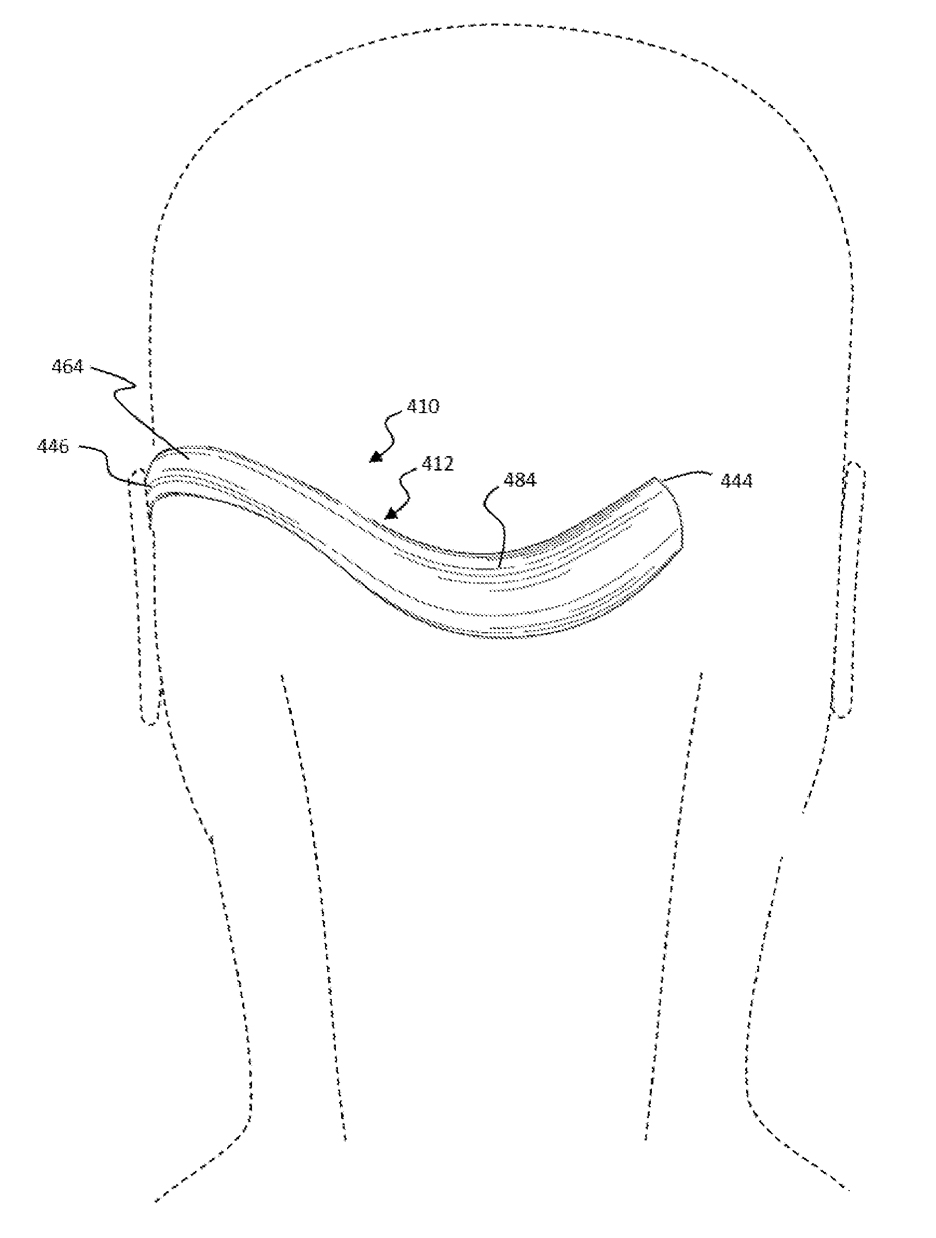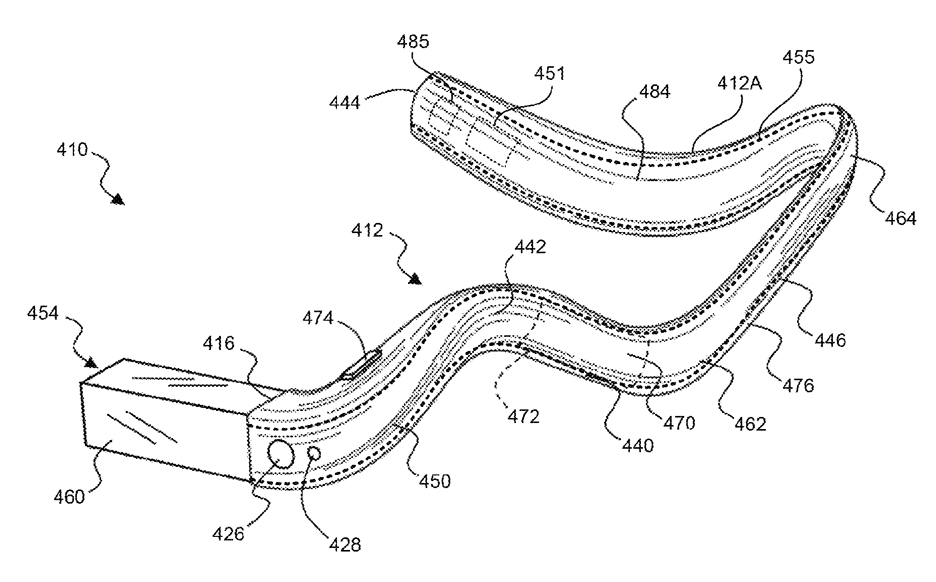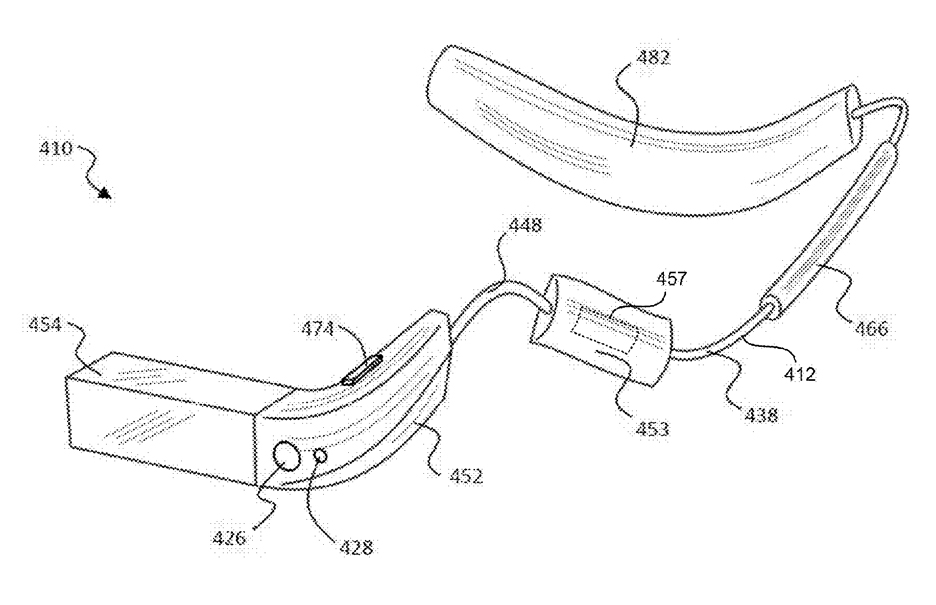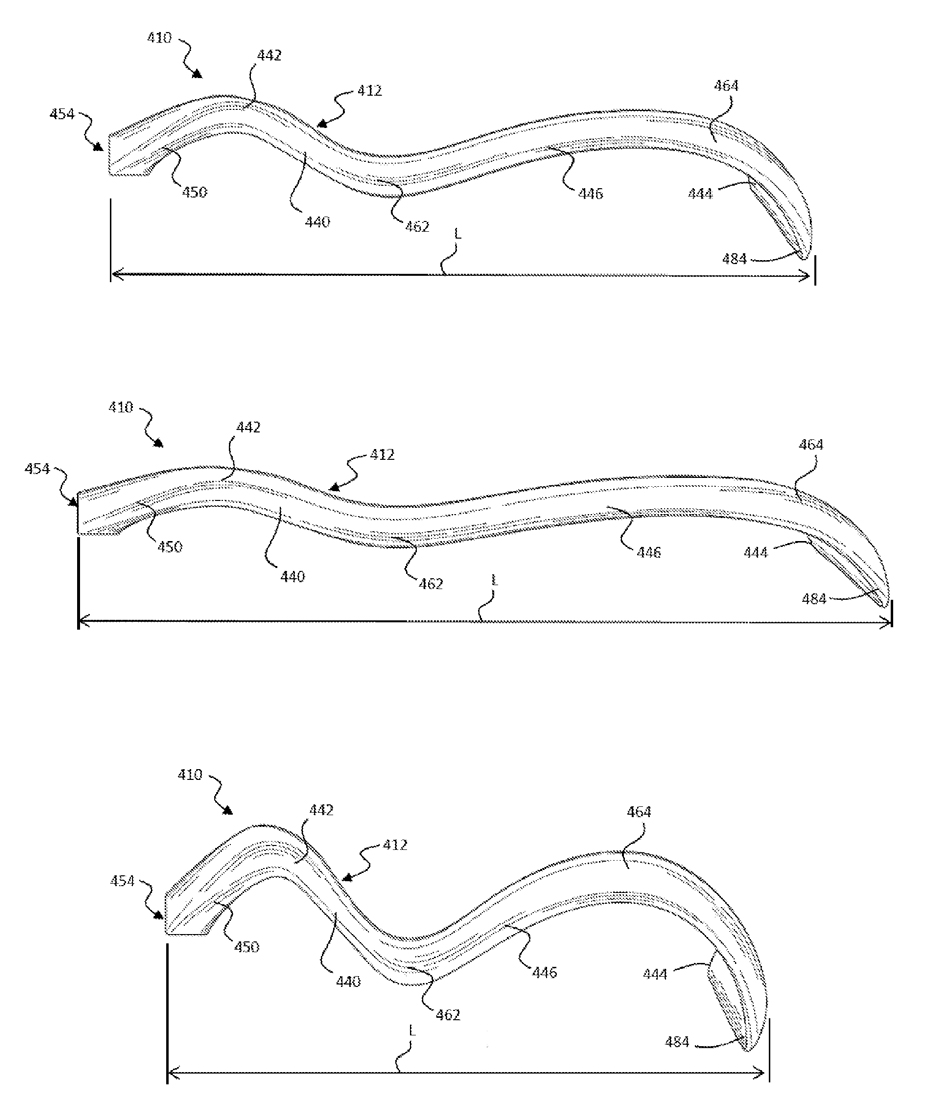Google granted patent for bendy Google Glass-style device
Google's latest approved patent is for a flexible heads-up display that could be the next version of Google Glass.

The electronic augmented reality device consists of a headband that rests on the wearer's temple and ear, and curves around the back of the head.
A solid display element is suspended over the eye – similar to the design of the original Glass headset design. Google suspended sales of the wearable at the start of 2015, in order to "graduate" the product, which has been given its own research division.

The display in the approved patent would be able to film from the wearer's perspective, using a small camera, and would overlay augmented reality displays onto the user's vision.
The document suggests this could be through a liquid crystal display, or a laser or LED source that would "draw a raster display directly onto the retina of one or more of the user's eyes".
Previous versions of the augmented reality glasses also worked by projecting an image into the display prism, which transmitted it into the wearer's eye.

A touch-sensitive surface would allow the users to interact with the device. Circuitry would be housed in the flexible band, which could be adjusted to fit the wearer's head.
The document suggests the band could contain magnetorheological fluid (MR fluid), which becomes solid when in the presence of a magnetic field.
The magnetic field could be generated by the device itself, using electromagnetics positioned in the band to retain the position of the device, once adjusted.

High-friction material, such as rubber or thermoplastic elastomer, would help maintain contact with the wearer's head.
The device could be available in small, medium and large sizes, and in left- or right-eye variations.
Google debuted Google Glass in 2013, and followed up its release with high-profile fashion collaborations with Luxottica and Diane von Furstenburg before taking it off the market.
Other companies have been experimenting with augmented reality headsets, including car brand MINI, which produced goggles to allow users to see through the body of their car.
Electronics company Sony made its own augmented reality glasses available to developers earlier this year, and Microsoft is also working on its HoloLens headset.